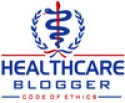
We may well be in the midst of the most unsettling era in health care and that turbulence is bone-jarring to physicians. There is a doctor crisis in the United States today – a convergence of complex forces preventing primary care and specialty physicians from doing what they most want to do: Put their patients first at every step in the care process every time.
Barriers include overzealous regulation, bureaucracy, liability burden, reduced reimbursements, and poorly designed care delivery systems.
On the surface the notion of a doctor crisis seems altogether counterintuitive. How could there be a “crisis’’ afflicting such highly educated, well-compensated members of our society?
But the nature of the crisis emerges quite clearly when we listen to doctors. Ask about the environment in which they practice and you hear words such as “chaos,’’ “conflict,’’ and “dysfunction.’’ Based on deep interviews with doctors throughout the country, the research firm Harris Interactive reports that a majority of physicians are pessimistic about their profession; a profession Harris describes as “a minefield’’ where physicians feel burned out and “under assault on all fronts.’’
Have terms this extreme ever been used to characterize the plight of physicians in our nation? Burnout, chaos, conflict, dysfunction, minefield, under assault. How can the nation transform its health care system under such disturbing conditions?
The existence of the doctor crisis demands that the broad community of health care stakeholders recognize the import of the crisis and acknowledge that solving it is a prerequisite to achieving excellence in access, quality, equity and affordability.
Important steps toward a solution have already been taken. Innovative organizations are shifting the burden of non-doctor work to other team members enabling physicians to focus on more complex cases and manage population care while medical assistants, nurses, receptionists, clinical pharmacists all work to the peak of their considerable skill.
A foundational belief is that fixing the doctor crisis is a prerequisite to achieving access, quality, and affordability throughout the United States.
Ridding the lexicon of the burnout-chaos-conflict-dysfunction-minefield-under assault syndrome requires not only recognition and acknowledgement of the crisis, but also a belief that solving the crisis is one of the most patient-centered steps we can take.
What Defines a Physician Today?
The evolution of the physician’s role in our society has accelerated rapidly in recent years. The days when a doctor’s responsibility to patients began and ended within the clinic walls are gone.
In the Information Age, physicians take responsibility not just for individual patients but also for managing populations of patients. Physicians serve as healers on a much broader scale than ever before.
At one time, the healer did his or her work in the exam room. The new healer works in a clinical team with electronic medical records, clinical registries, and a team of skilled staff.
The old promise was we are sorry you are sick and we will use our skill to make you well. The new promise is we will do everything we can to make sure you do not get sick in the first place, but if you do get sick we will provide compassionate care that is supported by the best available knowledge and science.
In the book, The Doctor Crisis, the authors define the new physician role as that of a healer, leader, and partner. This is an ambitious and necessary expansion of the doctor’s portfolio taking responsibility for all six of the Institute of Medicine’s essential elements of quality – care that it is safe, timely, effective, efficient, equitable, and patient-focused.
Is this fair? Is it reasonable to ask doctors to become something more than they have been? Most physicians already feel overwhelmed–understandably so. They are asked to do too much in a system that too often thwarts their efforts as much as it enables them.
It must be emphasized that physician as healer possesses the strong clinical skills needed to deliver excellent care in a compassionate, healing way. In many ways, physician as healer embodies many aspects of the traditional definition of a good doctor.
The healer role extends from the patient to his or her family and recognizes both the physical and emotional issues at stake. The healer acknowledges that great clinical care must always be patient-centered and that shared decision making with the patient is essential. The healer understands the concept of nothing about me without me.
Skilled healers are deeply knowledgeable about the best practices for the most common ailments, and they apply standard work–proven, reliable treatments–in such cases, knowing that it is safer and more reliable and that unwarranted variation means care that is not only suboptimal but also unnecessarily expensive.
Healers also know that many of their patients do not fit easily into a best-practice category. These doctors are skilled at personalized, customized care for each individual patient who needs it.
Dr. Amy Compton-Phillips of Kaiser Permanente sums it up well: “Skilled healers–no matter their specialty–take care of the person, not the problem. Orthopedic surgeons, for example, are not physicians for a body part. They are physicians for a person. This is complete care. It’s when physicians across the spectrum take the position that a healer’s role isn’t to heal a problem, it is to heal a person.”

 RSS Feed
RSS Feed































